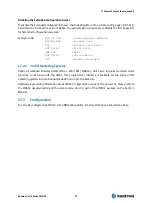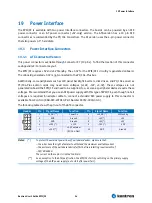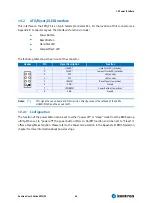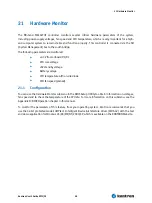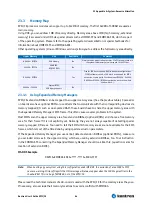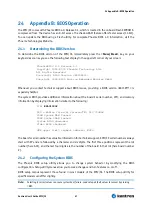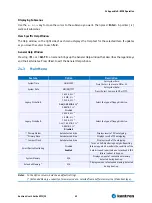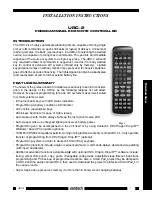
22 Important Technology Information
Kontron User's Guide EPIC/CE
59
22
Important Technology Information
The following information will give the reader a better understanding of some of the features offered by
the EPIC/CE. This information can be referenced when reading the Appendix A: System Resource
Allocations and Appendix B: BIOS Operation sections that follow. There also are references to additional
documentation that will help to develop a better understanding of the technical information. They are
listed in the Appendix F: PC-Architecture Information.
22.1
Thermal Control
22.1.1
Thermal Management
The Thermal Management feature of the EPIC/CE helps control the processor’s temperature by activating
the automatic thermal throttling after the processor silicon reaches a certain temperature. This feature
can be enabled and configured in the BIOS Setup utility. You can specify the temperature level when
throttling starts, define a hysteresis value to get back to 100% CPU performance, and specify the
percentage for CPU performance in throttling mode. Automatic thermal throttling mode does not require
additional hardware, software drivers, or interrupt-handling routines.
This feature should be used with none ACPI-aware operating systems.
22.1.2
ACPI Thermal Management
ACPI allows the OS to play a role in thermal management. With the OS in control of the operating
environment, cooling decisions can be made based on the application load on the CPU and the thermal
heuristics of the system. This feature should be used with ACPI-aware operating systems. The ACPI
thermal solution on EPIC/CE supports three cooling policies and their trip points, including:
Active Trip Point
Active cooling devices typically consume power and produce noise but are able to cool a thermal zone
without limiting system performance. The active cooling trip point declares the temperature threshold
that the OS uses to start/stop active cooling devices such as the fan.
Passive Cooling Trip Point
Passive cooling devices produce no noise but may not be effective enough to cool the thermal zone. The
passive cooling trip point declares the temperature threshold in which the OS will start or stop passive
cooling. In this case, it throttles the processor.
Critical Trip Point
The OS performs an orderly but critical shutdown of the system when the temperature reaches a critical
trip point.
Summary of Contents for EPIC/CE
Page 1: ...Kontron User s Guide EPIC CE Document Revision 1 14...
Page 2: ...This page intentionally left blank...
Page 88: ...25 Appendix C Block Diagram Kontron User s Guide EPIC CE 88 25 Appendix C Block Diagram...
Page 93: ...27 Appendix E Connector Layout Kontron User s Guide EPIC CE 93 27 2 Bottom Side...








